Fast Facts
- When: 2nd February to 16th March 2024
- Where: Various Stadiums
- Watch: Live on BBC, ITV & S4C
- Official Website: 6 Nations Website
The Six Nations takes place every year and is the pinnacle of the rugby calendar for Northern Hemisphere sides.
The tournament is contested between England, Scotland, Ireland, Wales, France and Italy, each competing to be crowned Six Nations Champions (or European Champions, as some call it).
Those betting on the tournament can expect a wide range of offers, including ante-post, regular free bets and money back specials and odds enhancements which we will show below, along with our team by team guide and betting predictions.
Existing Customer Free Bets & Money Back Offers
Please Note: This event has now ended.
Stats Articles
Schedule
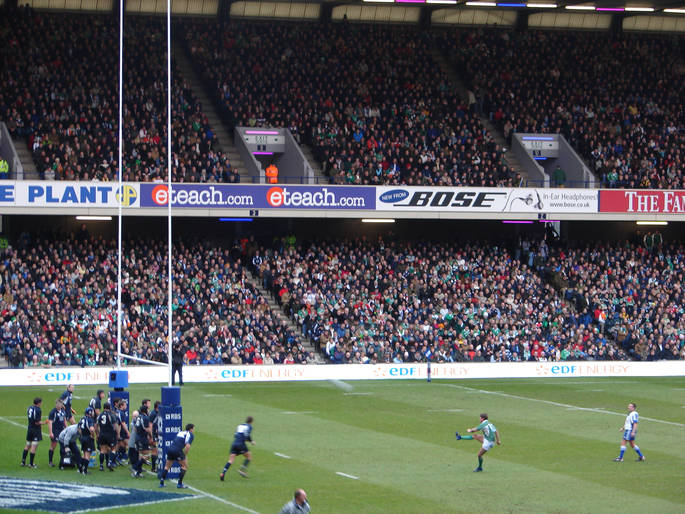
Below you’ll find details of all Six Nations matches including dates, times and where to watch on TV. All times are given in UK time rather than the local kick off time.
Six Nations 2024 Fixture List
| Round | Day & Date | Match | Kick-Off Time (GMT) | TV Broadcaster |
|---|---|---|---|---|
| 1 | Fri 2nd Feb | France v Ireland | 20:00 | ITV |
| Sat 3rd Feb | Italy v England | 14:15 | ITV | |
| Wales v Scotland | 16:45 | BBC & S4C | ||
| 2 | Sat 10th Feb | Scotland v France | 14:15 | BBC |
| England v Wales | 16:45 | ITV & S4C | ||
| Sun 11th Feb | Ireland v Italy | 15:00 | ITV | |
| 3 | Sat 24th Feb | Ireland v Wales | 14:15 | ITV & S4C |
| Scotland v England | 16:45 | BBC | ||
| Sun 25th Feb | France v Italy | 15:00 | ITV | |
| 4 | Sat 9th Mar | Italy v Scotland | 14:15 | ITV |
| England v Ireland | 16:45 | ITV | ||
| Sun 10th Mar | Wales v France | 15:00 | BBC & S4C | |
| 5 | Sat 16th Mar | Wales v Italy | 14:15 | BBC & S4C |
| Ireland v Scotland | 16:45 | ITV | ||
| France v England | 20:00 | ITV |
About The Six Nations
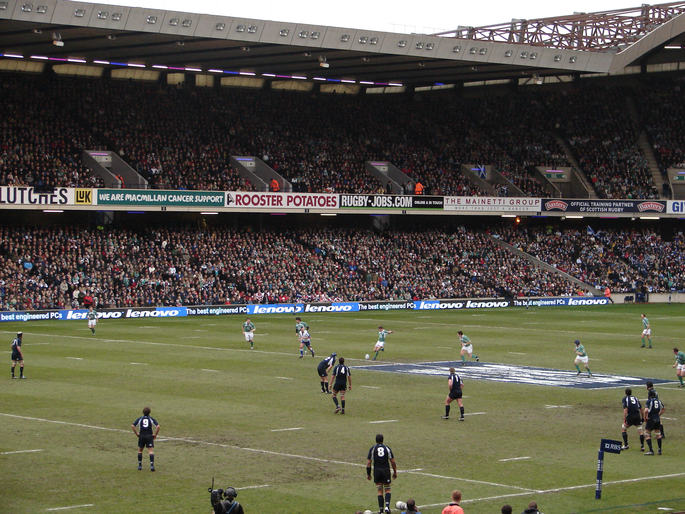
The Six Nations takes place every year and is one of the key competitions in the international rugby calendar for Northern Hemisphere teams. The tournament features national teams from England, Scotland, Ireland, Wales, France and Italy, each competing to be crowned Six Nations Champions.
The Six Nations as we know it started in 2000. It was at this time the then 5 Nations, decided to invite Italy to become part of the tournament, which they have done every year since. The original format of the competition however, included just England, Ireland, Scotland and Wales (know as the Home Nations). It remained in this format until 1910 where France were added to make up the then, 5 Nations.
Six Nations Structure – 1883 to Present
| Tournament | From | To | Teams | |||||
|---|---|---|---|---|---|---|---|---|
| Home Nations | 1883 | 1909 | ENG | SCO | WAL | IRE | ||
| Five Nations | 1910 | 1931 | ENG | SCO | WAL | IRE | FRA | |
| Home Nations | 1932 | 1939 | ENG | SCO | WAL | IRE | ||
| Five Nations | 1947 | 1999 | ENG | SCO | WAL | IRE | FRA | |
| Six Nations | 2000 | Present | ENG | SCO | WAL | IRE | FRA | ITA |
This History of the Six Nations

When looking at the history of the Six Nations it’s important to look at the history of the other competitions that preceded. The first competition between international sides in rugby union occurred in 1883 when the Home Nations Championship took place. It saw England, Ireland, Scotland Wales do battle on the rugby pitch to decide which country was the best at the sport. The idea had its basis in a match between England and Wales in Swansea the year before, with the English winning and kick-starting the festival of rugby that the Six Nations has since gone on to become.
The tournament was originally known as the International Championship, even though it was only competed by the teams of the United Kingdom and Ireland. It didn’t quite have the organised nature of the tournament today, either. There were no points to be played for, with judgements on the teams being based simply on whether or not they won the match that they played. It was also common at the time for the competition to be marred by disputes, with the championship not even being completed in 1885, 1887 or 1889. In the early days the competition was dominated by England and Scotland, with no other nation even winning until the Welsh did so in 1893.
Welsh Revolution & Domination
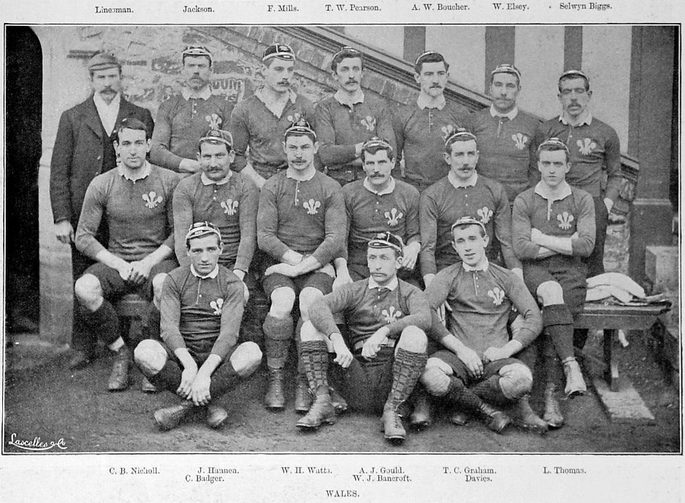
The year that Wales won wasn’t notable only for the fact that England and Scotland failed to take the trophy home between them for the first time. In fact, it would become known as a championship that would change the face of rugby. Prior to 1893 it was common for rugby teams to play six backs and nine forwards, but the Welsh went into the 1893 tournament with a four three-quarter system that flummoxed the opposition. They not only won the championship but also achieved the Triple Crown of beating all of the other teams.
The success of the Welsh side is believed to have revolutionised rugby at the time, with four three-quarters becoming the norm in international and club rugby. Not only that, but it also broke up the dominance of the English and Scottish teams. The year after Wales had won the tournament for the first time, the Irish did the same. Though all three teams had technically ‘shared’ the prize in 1888, England hadn’t participated that year so isn’t really thought of as being an important year in the tournament’s history. It also meant that all four of the home nations had won the competition before the turn of the century.
It would be untrue to suggest that Wales were the only team in it at the start of the twentieth century, but it’s certainly true that they dominated proceedings for the first decade or so. They won the Home Championship in 1900, 1902, 1905, 1908, 1909 and 1911, sharing it with Ireland in 1906. It’s also worth noting that they won the Triple Crown each time they won it on their own, meaning that they were not only champions but convincingly so, with no other nation able to get near them as they romped to success.
The French Invasion

Whether or not because of Wales’s dominance remains a matter of some debate, but in 1910 the decision was taken to invite France to take part in the tournament. This turned it from the Home Nations Championship into the Five Nations. Despite being welcomed into the tournament, the French didn’t really pose much of a threat to the existing order of things. In fact, they only managed to win one game during their first four years of competition, which was a single point victory over the Scottish in 1911.
Between and After the Wars
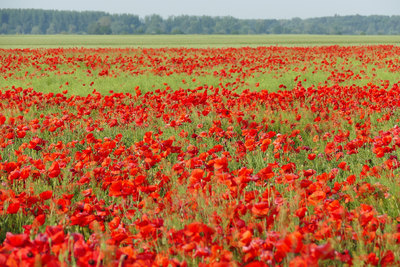
The tournament continued taking place until the First World War broke out across Europe and rugby union’s international matches were halted. They didn’t resume again until 1920, with the English dominating proceedings after the War. England picked up six championships over the following thirteen years, also sharing the win with Scotland and Wales in 1920 and Ireland and Wales in 1932. Four of those English wins also included Grand Slams for them.
In amongst that period of English dominance came a couple of bright moments for the Scottish, with those north of the border winning their first Grand Slam in 1925 and then becoming the first side to beat England at their home of Twickenham the following year. The French, meanwhile, continued to struggle and even had to pull out of the tournament in 1931 when it emerged that some of their players had been paid by their clubs. They withdrew from the competition until the 1939 season, but the outbreak of the Second World War resulted in them missing a further eight years of competition.
In the wake of the Second World War, everything changed. Ireland became the dominant force in rugby, winning three out of four tournaments from 1948 to 1951. This included Triple Crowns in 1948 and 1949, but it was only the start of the changing face of rugby. In 1954 the French came to prominence for the first time, sharing the spoils with England and Wales. The year after the French shared the title with just the Welsh, then in 1959 they won the title outright for the first time. It was to be the start of a period of dominance for the French, sharing it with England in 1960 before winning it outright again in 1961 and 1962.
Between 1959 and 1971, either Wales or France had their name on the trophy either in their own right or shared with another nation every year except for 1963. The only reason neither side won it in 1972 was that no tournament took place, with Scotland and Wales refusing to travel to Dublin on account of the political upheaval taking place in Ireland at the time. Though it was entirely accidental, the 1973 Five Nations gave the impression of being about a coming together of the competitors after the previous year’s disagreement, with every nation winning and losing two games apiece to create a unique five-ways tie.
England’s Decline & Return to Glory
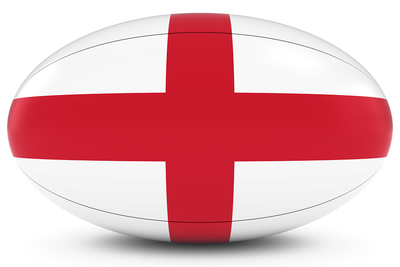
Having been the most successful side in the tournament since it was first played in 1883, England suffered something of a collapse in the 1970s and 1980s. It wasn’t helped by the utter dominance of the Welsh throughout the 1970s, with Wales winning the Five Nations four times in six years. They went into the 1980s having picked up a Triple Crown and three Grand Slams, whilst England struggled. It seemed as if the English might be able to get themselves back into regular contention when Bill Beaumont’s side won the tournament and the Grand Slam in 1980, but but they failed to win the tournament again that decade.
Having watched the Welsh rule the roost for the best part of a decade, it was the turn of the French to be the dominant side throughout the 1980s. They won the tournament three times outright in 1981, 1987 and 1989, also managing to share the honour with Ireland in 1983, Scotland in 1986 and Wales in 1988. France were only stopped from completely dominating proceedings by a Scottish side that won the Grand Slam in 1984 and an Irish team that achieved the same thing the following year. The 1985 win for Ireland was to be the last time that they would win the tournament for nearly fifteen years.
Having spent the best part of thirty years failing to impress, the English returned to the top of the game when the 1990s rolled around. England won the tournament in 1991 then repeated the trick the following year, missing out to France in 1993 and Wales in 1994 before winning it again in 1995 and 1996. The latter was a year of sporting success in general in England, given that the men’s football team also hosted the European Championships and made it to the competition’s semi-final. If England weren’t winning in the 1990s then it seemed as though France were, picking up three of the other victories during the decade.
Italy and the Formation of the Six Nations
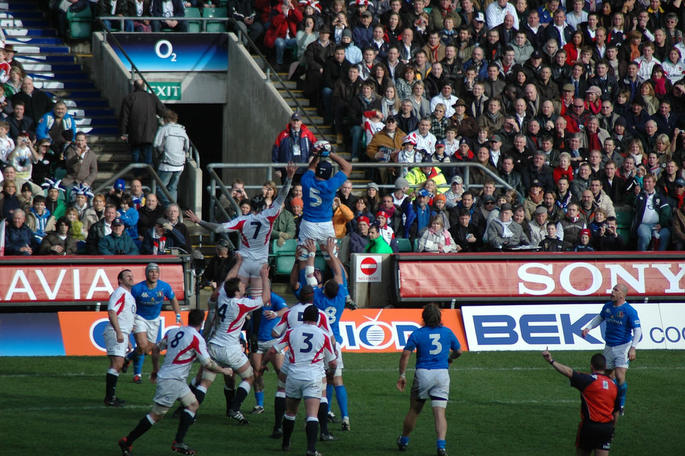
The results in the 1990’s lead to many feeling that the competition had lost its competitiveness, believing that the tournament’s standard wasn’t high enough. Organisers chose to add an edge of competition by inviting Italy to join the tournament from 2000 onwards. This saw the near one hundred year Five Nations become the now well-known and much-loved Six Nations. The decision to add the Italians to the format seemed to be almost immediately justified too, with Italy winning their opening game of the new Six Nations against Scotland in Rome. Six years later they picked up back-to-back wins over Scotland Wales and finished fourth.
Though Italy haven’t yet won the Six Nations, there’s an argument that their very presence in the competition has ensured that no one team is able to dominate as they have in the past. After the turn of the millennium it initially looked as though it would make no difference, given that England won the tournament in 2000, 2001 and 2003, only stopped by France in 2002. Since then, however, all of the nations apart from Italy and Scotland have won the Six Nations on a fairly regularly basis.
It did appear as though the French were going to be runaway leaders of the Six Nations when they won the tournament in 2002, 2004, 2006, 2007 and 2010. However, they had to wait until 2022 to win their next championship, instead having to watch England, Ireland and Wales pick up the trophy on multiple occasions. Italy, meanwhile, have been awarded the Wooden Spoon on 18 of the 24 occasions that they have taken part in the competition. Neither England nor Ireland have won the humiliating award as things currently stand.
Current Format
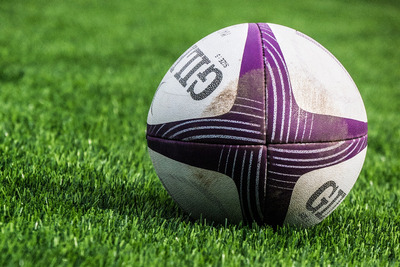
The format is essentially a mini league table, where each team plays each other once throughout the competition, leading to a total of five games for each of the teams.
Within the tournament there are two major trophies on offer, the Championship Trophy and the Triple Crown Trophy. The Championship Trophy is what is awarded to the overall winner of the competition and if one team were to win all five of its games then it’s commonly known as winning the Grand Slam. The Triple Crown can only be won by England, Scotland, Ireland or Wales and will be awarded if one team beats all of the other three opponents. If no team manages to do this then the award will not be presented.
Points Scoring System
The scoring system, updated in 2017, includes four points for a win, two for a draw and none for a loss of more than seven points. Bonus points are awarded for any team scoring four or more tries in a game and for teams which lose by seven points or fewer. This is to encourage attacking play and also means that a losing team can pick up two points if they lose by seven points or less and also score four or more tries.
There are an additional three points on offer to a team if they complete the Grand Slam. Should two teams end up on the same amount of points upon completion of the tournament then they will be separated for the purposes of the league table according firstly to points difference, then to game points difference in order to determine a winner.
Stadia
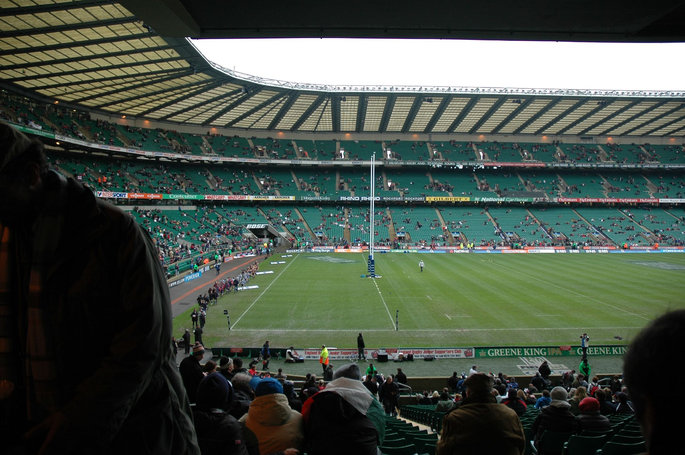
The tournament is held at the national stadiums of the six teams involved. As each team plays each other just once in the competition, the home and away ties alter each year. For example, if England played Ireland at home one year, the next year Ireland would be at home.
All stadiums are designed to hold tens of thousands of people. England’s, Twickenham, is the largest capacity of the six, holding 82,000 spectators, with the smallest being the Aviva Stadium in Ireland, which holds just over 51,000.
Wales’s Millennium Stadium, which will be better known to football fans as the venue that hosted the FA Cup when Wembley was being rebuilt, has room for just under 74,000 supporters and is located in Cardiff. The Stade de France is another stadium that many football fans will recognise the name of, given that it’s the home of both football and rugby in France. It can welcome just shy of 81,000 spectators and is not far from Paris.
In fact, every nation apart from England and Scotland tends to use their main stadium for more than one sport; even the Aviva Stadium hosts the Republic of Ireland’s football matches. In Italy it’s the Stadio Olimpico that hosts the rugby matches, with the stadium having also played host to four European Cup finals for football lovers, to say nothing of both AS Roma and AS Lazio calling it their home. The Scottish might have underperformed in the Six Nations in recent years but they’re still big rugby lovers, dedicating the use of Murrayfield Stadium to the sport.
Interesting facts
England are narrowly the most successful nation in the current tournament format. They have managed to win seven championships, two Grand Slams and five Triple Crowns. It is Ireland however who have won the most games over the course of the Six Nations, amassing 81 wins from their 120 games.
It’s Wales and France who are the the second most successful with six 6 Nations Championship wins each. They are one ahead of Ireland on five. France and Wales have won the most Grand Slams with four each, ahead of Ireland with three and England with two.
Six Nations Record by Country – 2000 to 2023
| Nation | Champion | Runner-Up | Third | Fourth | Fifth | Sixth |
|---|---|---|---|---|---|---|
| England | 7 | 8 | 4 | 3 | 2 | 0 |
| France | 6 | 6 | 4 | 5 | 2 | 1 |
| Wales | 6 | 2 | 2 | 6 | 7 | 1 |
| Ireland | 5 | 8 | 9 | 1 | 1 | 0 |
| Scotland | 0 | 0 | 5 | 7 | 8 | 4 |
| Italy | 0 | 0 | 0 | 2 | 4 | 18 |
Awarded to the lowest ranked team in the tournament, the Wooden Spoon is an award that no team wants to win. As mentioned earlier, Italy have managed to receive the Wooden Spoon on no fewer than 18 occasions, with the next worst being Scotland with four. No actual Wooden Spoon is awarded.
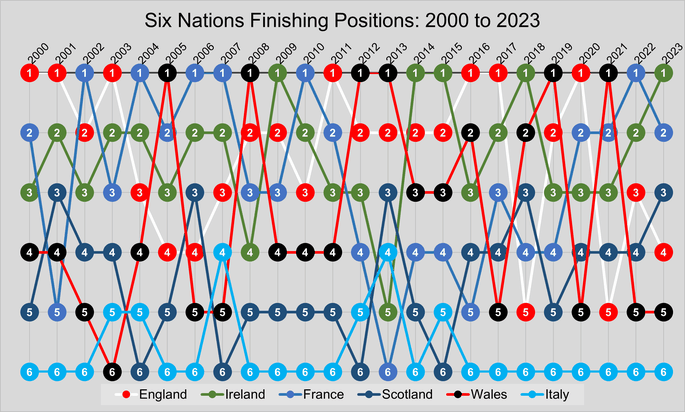
In terms of individual awards, Jonny Wilkinson of England currently holds the record for the most points by an individual in one game with 35. He also went on to win the most points in a tournament with 89 in the same 2001 Six Nations. However, it is Ireland’s Johnny Sexton who is the leading points scorer of all time with 566, leading fellow countryman Ronan O’Gara with 557 points with Jonny Wilkinson in third with 546. Italy’s Sergio Parisse is the most capped Six Nations player with 69 appearances for his country.
There are actually four lesser trophies on offer throughout the course of the Championship. The Calcutta Cup has been running annually since 1879 and is awarded to the winner of England against Scotland. The Centenary Cup has been awarded since 1989 and contested between Scotland and Ireland. The Giuseppe Garibaldi Trophy is played between France and Italy, with the Millennium trophy played between England and Ireland.
